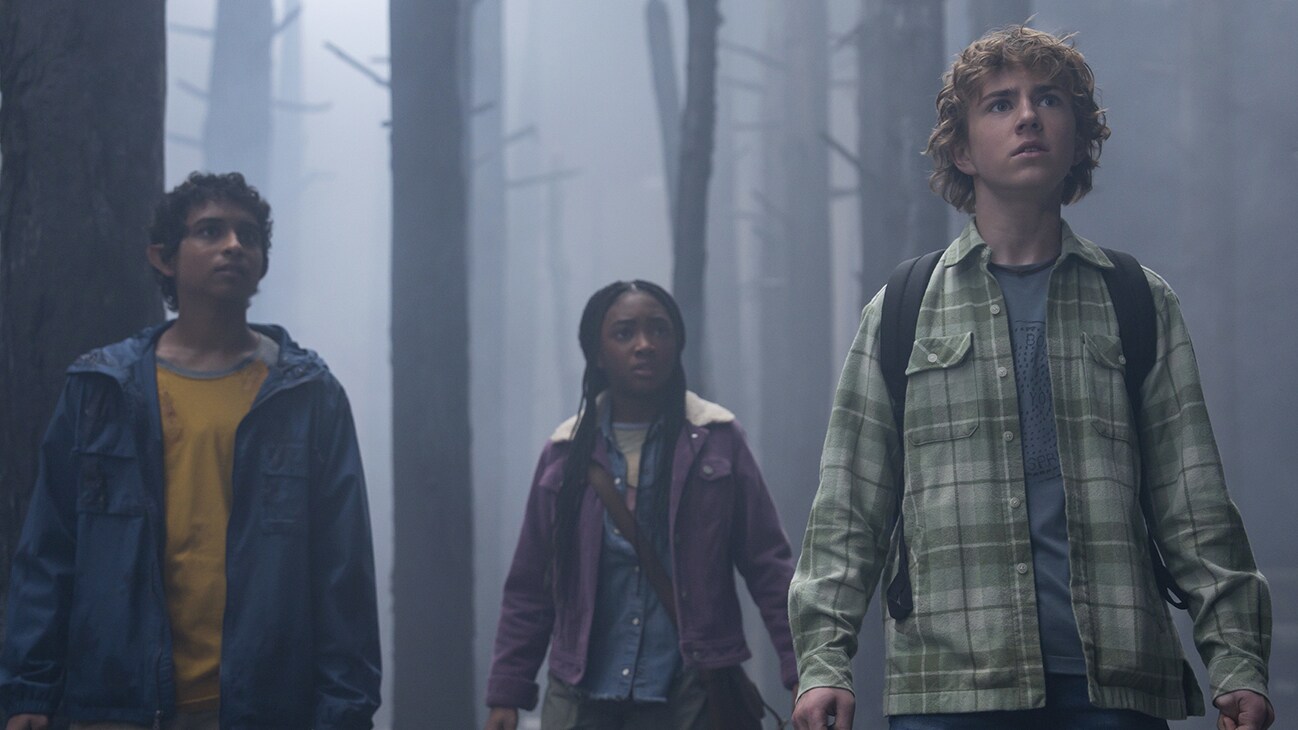Table of Contents Show
The term mythology (mythos) evokes grand and supernatural stories from around the world: the Titan Kronos devouring his children whole, the sun god Ra riding his barge through the heavens, or Shiva striking off the head of Ganesha and replacing it with an elephant’s.1Willis, Roy G., ed. World Mythology. Macmillan, 1993. But just as these stories are important to human history and culture, so are our modern stories: Luke Skywalker facing down his father2 Darth Vader Lucas, George. Star Wars: Return of the Jedi. Lucas Films. 1983., Peter Parker gains amazing powers after being bitten by a radioactive spider 3Lee, Stan. Amazing Fantasy #15. Marvel Comics. 1962., or Frodo and Gollum’s struggle for the One Ring over the lavas of Mount Doom4Tolkien, J. R. R. 1892-1973. The Return of the King: Being the Third Part of The Lord of the Rings. New York, N.Y., Quality Paperback Book Club, 2001..
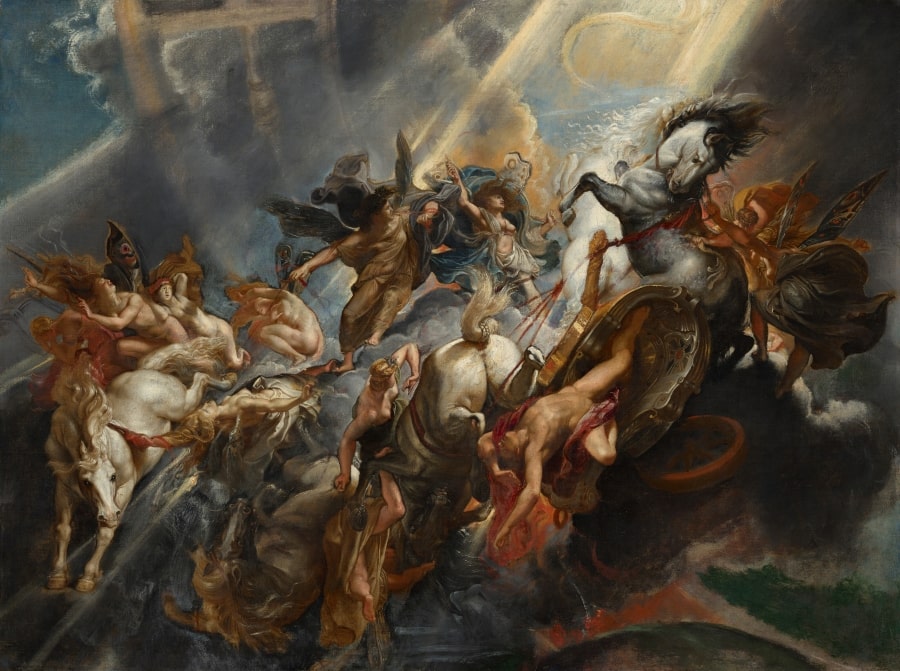
As myths are recounted and transformed by modern popular culture, they undergo cultural shifts that have been taking place for thousands of years. We, as audiences, can reinterpret mythology through new lenses, informed by our histories and beliefs — and fandom plays a powerful role in how we understand and create new mythologies for the modern world.
The Role Of Fandom In Shaping Contemporary Mythologies
Finding a working definition for the word ‘myth’ that can be applied in various ways is difficult; mythology refers to stories, traditionally told orally, that explain an earthly phenomenon, and define morally just behaviors, or structures of religious beliefs. In general, mythology is a set of stories that are important or sacred to a specific culture. These stories, told over time through generations, can easily become changed by a group’s specific values or interpretations, combined with other mythologies, or simply misunderstood or mistranslated; such as the transition between the Greek and Roman pantheons.
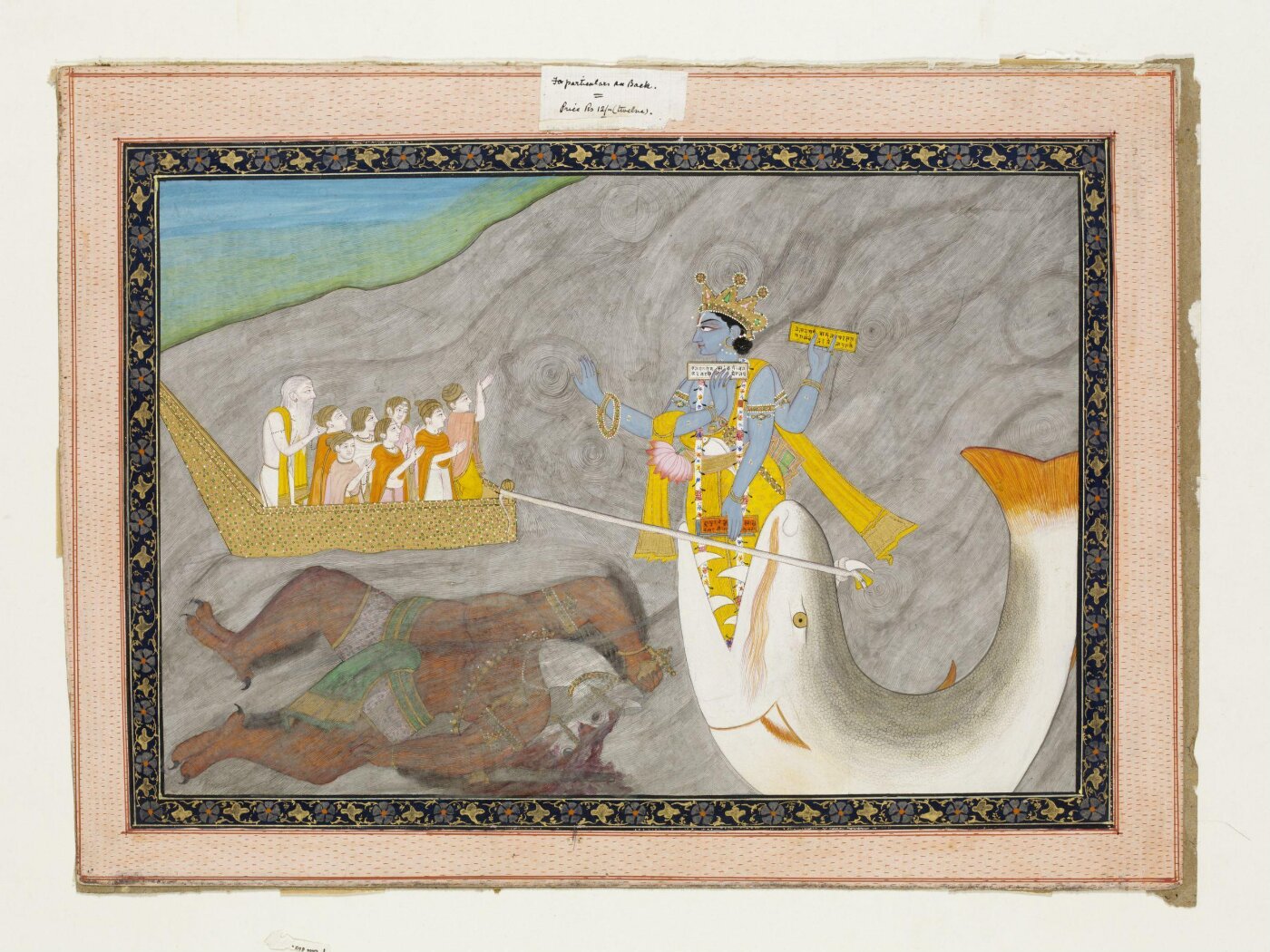
Though it may be tempting to consider mythology as the remnants of ancient, dead religions, or culture — mythological stories are very much alive and well in modern culture. In a time when more stories are being produced than ever before in the form of literature, film, television, and gaming: fandom is making way for a new mythos. However, defining mythology also creates a sensitive area of overlap with religion and folklore.
All three evoke different levels of “legitimacy” or “authenticity,” often placing myths as akin to fiction or pre-scientific understandings of the world. It is important to remember that all belief systems and cultural practices are equally valid and often lend themselves to one another.
David Leemings writes in The Oxford Companion to World Mythology:
“To the extent that religion is a system that lends authority to myths, a religion is a mythological system… Religious stories are “holy scripture to believers– narratives used to support, explain, or justify a particular system’s rituals, theology and ethics, and are myths to people of other cultures or belief systems.”
5Leeming, David. The Oxford companion to world mythology. Oxford University Press, 2005.
Religion and myth are viewed through the “eye of the beholder” meaning that one person’s values determine how they view the difference between religion and myth. For the sake of simplicity, defining mythology as a collection of important stories and religion as the belief system around those stories creates a distinction that does not devalue one over the other. While the stories of the Bible or Ramayana are mythologies, the belief in those stories is their religion.

Mythologies are the collection of stories that impact our wider cultures, beliefs, and lives: regardless if we believe in them or not. The incorporation of fandom has simply become an additional element within these remarkable narratives.
Religious (Fan)fiction
Perhaps the most famous example of fandom turned mythology is in the works that sprung up surrounding Christianity; Dante’s The Divine Comedy6Alighieri, Dante. The Divine Comedy. Translated by H. F. Cary, Wordsworth Editions, 2009. and John Milton’s Paradise Lost7Milton, John, 1608-1674. Paradise Lost. London ; New York :Penguin Books, 2000. added new elements to the religion that, while not present in any Biblical texts, remain present in the minds of modern practitioners.
The Divine Comedy tells the story of Dante himself taking a journey through heaven, hell, and purgatory. The Inferno infiltrated religious beliefs by creating layers of hell that each represent a punishment for a sin (adultery, greed, treason, etc.). Dante is guided by Virgil, author of the Aeneid and other important Latin literature, through the layers of hell. Meanwhile, Paradise Lost provides new context and additions to the Book of Genesis, in which Satan falls from heaven into hell. From there he enacts his revenge on humanity by taking the form of a snake and convincing Eve to eat an apple from the Tree of Knowledge — the story that becomes the backbone of the Christian religion.
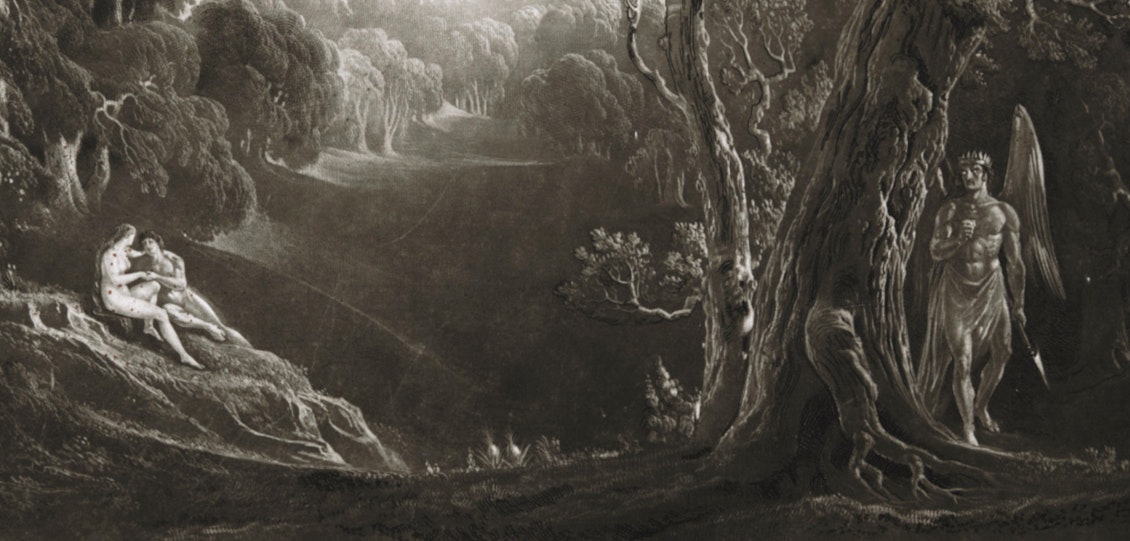
Both stories, though not part of the Christian canon, have become important parts of the mythology. Many modern-day readers consider them to be examples of early fanfiction as they introduce non-canonical events, characters, and perspectives to the original texts. The Inferno also includes fanfiction tropes such as self-insert and real-person fiction. However, whether or not these works of literature are works of fanfiction is up for debate. While they include popular tropes associated with fanfiction, they beg the question if religion can be considered a fandom (and if that’s offensive) or if Dante and Milton, who were genuine believers of Christianity, could be considered fans.
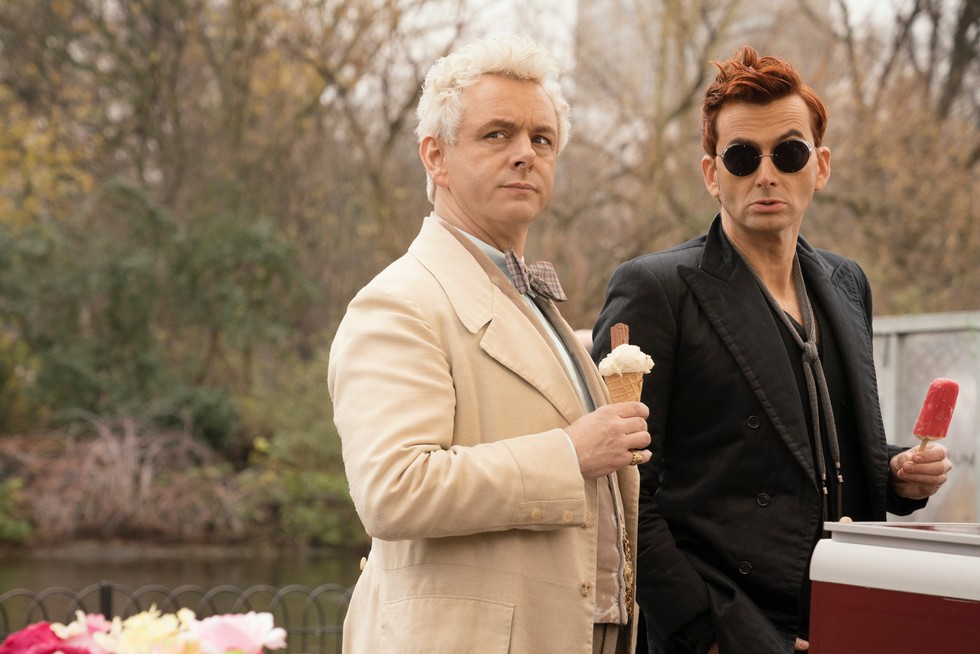
That said, the tradition of writing religious fiction is still prevalent today; Neil Gaiman and Terry Pratchett’s Good Omens8Gaiman, Neil, and Terry Pratchett. Good Omens. Gollancz, 2014. rewrites Biblical stories and beliefs to focus on Aziraphale and Crowley, two fictional characters who represent the nuance between good and evil that popular mythologies create. Netflix’s Lucifer 9Wiseman, Len, director. Lucifer. Netflix. 2016-2021. Warner Archive Collection 2015. follows in the path of Paradise Lost by retelling the events of the fall of man from Satan’s perspective and how the character may live in the modern world. Though these modern retellings have not had the same cultural or religious impact as Dante or Milton, they do represent the same phenomenon of reimagining important mythologies to question our moral values.
Fandom in this manner complicates and critiques long-standing religions and mythologies by following traditions set by storytellers centuries ago.
Reimagining Myths — A Fandom Perspective
When you think about mythology in popular culture, you most likely think about the ways that classical myths have been altered by current-day storytellers.
Percy Jackson and the Olympians10Riordan, Rick. Percy Jackson and the Olympians, Book One the Lightning Thief. Hyperion, 2006. takes the idea of modern mythology very seriously; the series imagines a world of demigods in 21st-century America. Rick Riordan writes that the gods have “moved with the spirit of the West” and have placed Olympus at the top of the Empire State Building, while demigods and monsters roam about the country. The books comically capture Greek myths by imagining how these supernatural beings would fit in, such as the Lair of the Lotus Eaters existing as a casino in Las Vegas or the Amazons working at a shipping company.
Though the Percy Jackson series aims to be educational and tell the myths as accurately as possible, many Greek myths have several equally acceptable interpretations. The Disney+ adaptation brings light to these interpretations in Season 1, Episode 3, “We Visit the Garden Gnome Emporium”11Engström, Anders. “We Visit the Garden Gnome Emporium”. Percy Jackson and The Olympians. Disney+. 2023. in which Percy, Annabeth, and Grover meet Medusa, who sells statues of her victims. This episode draws attention to Medusa’s story as subject to multiple retellings and variations, in which she is either cursed by Athena for desecrating her temple or given the gift of turning her assailants to stone.
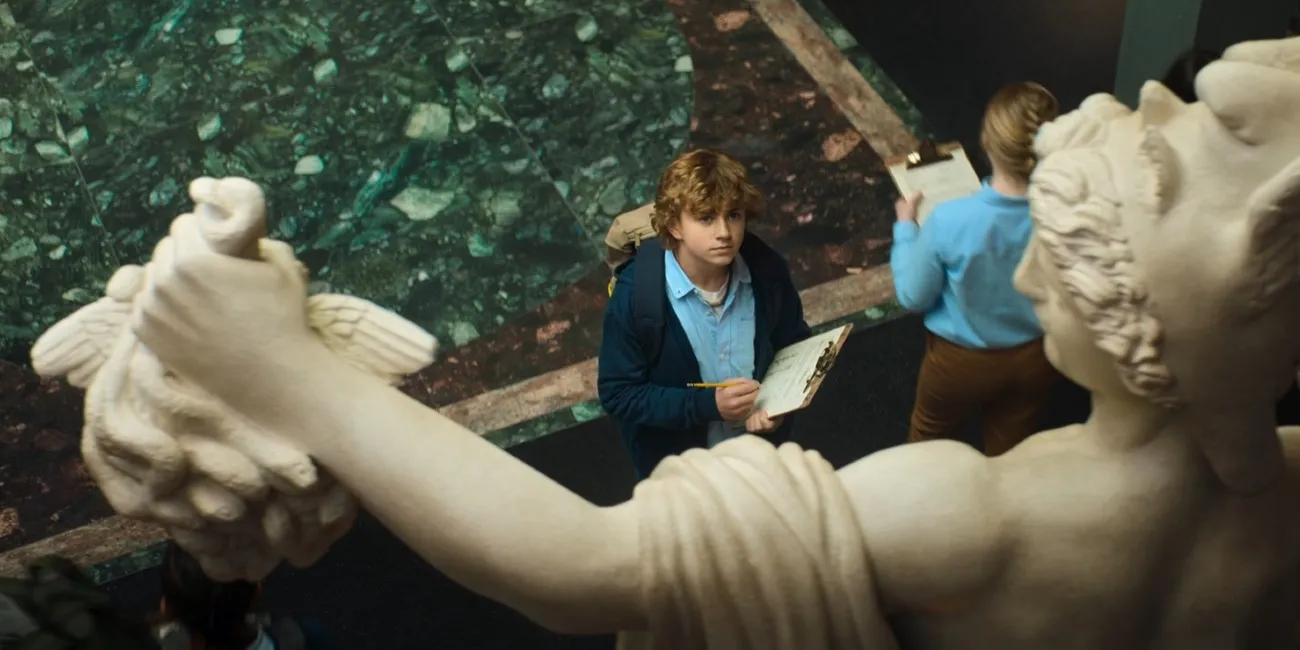
The episode expertly juxtaposes these narratives through Medusa’s self-identification as a survivor and Annabeth who argues her mother Athena is always just in delivering punishment. Marvel also flaunts a retelling of Norse mythology. The god of thunder, Thor, is a character who has been adapted to the superhero genre by wielding the hammer Mjolnir. In the original comics, Thor is punished by Odin to forget his life as a god and live as a mortal on Earth 12Lee, Stan. Journey into Mystery #83. Marvel Comics. 1962.. Reincarnated as Dr. Donald Blake, he finds Mjolnir in a cave and is able to transform into The Mighty Thor.
The Marvel Cinematic Universe alters this story by allowing Thor to keep his memories of godhood and identify as Thor throughout the films. Other characters from Norse mythology such as Loki, Odin, and Frigga all appear in comics/films as well, but with notable changes from their original myths (in Norse myth, Loki is not Thor’s adopted brother but rather a companion of the gods). While it would be easy to pass off these stories as “bastardizations” of the original or as insults to modern-day worshipers, it would be disingenuous to ignore the power of these retellings.
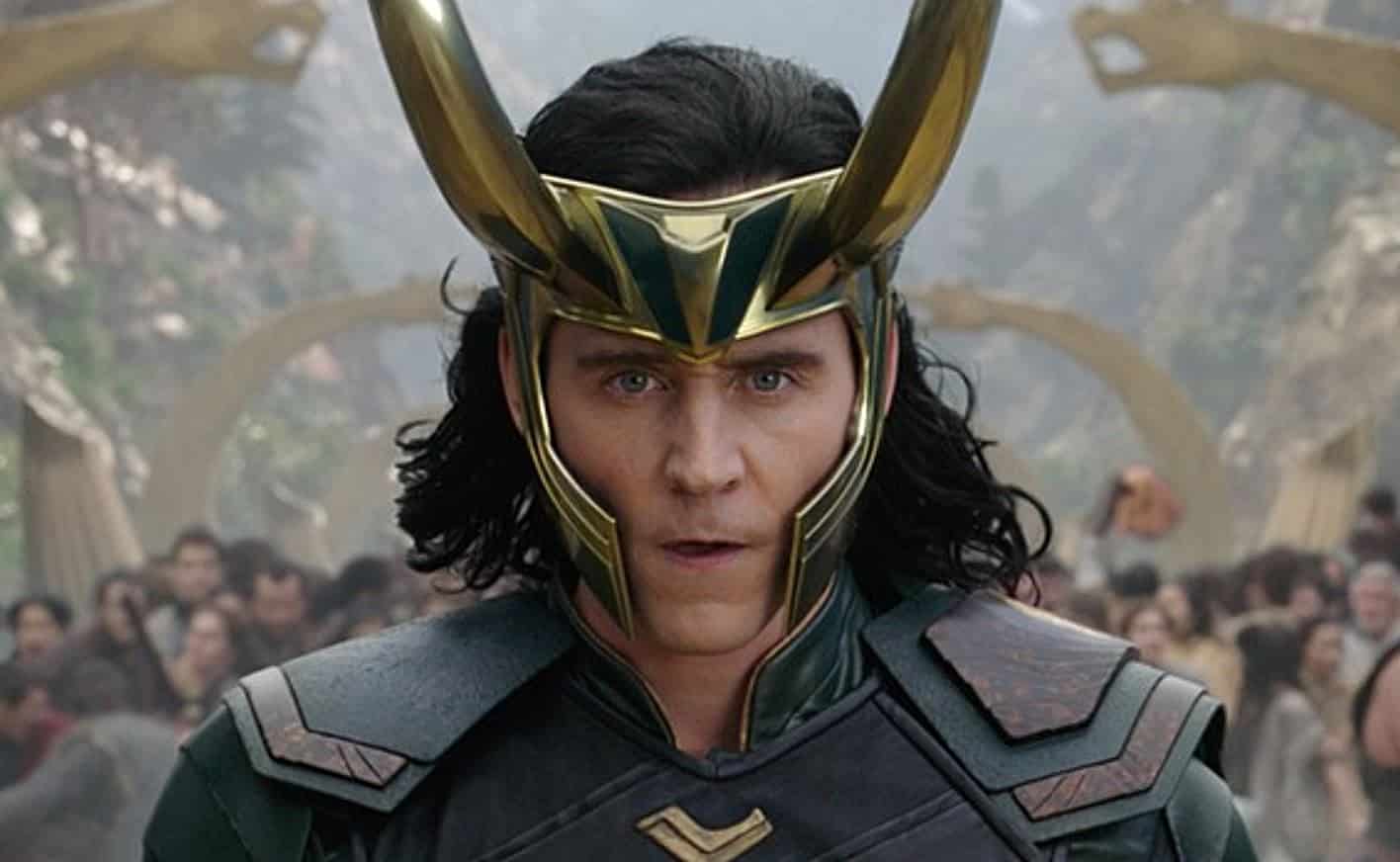
Just as the original stories were retold, misremembered, or altered by their audiences, we do the same with popular culture. We create space to allow room for these classical figures to exist in our daily lives. Just as the Greek Athena became Roman Minvera and Bellona, we do the same with the Norse and MCU versions of Loki. The gods and their stories have always been mutable but stem from the same vein of appreciation. Fandoms, particularly tabletop or role-playing games, create new stories and characters in fantasy worlds.

Nika. Benedictova. Unsplash. 2021.
Players of Dungeons and Dragons will recognize the long list of pantheons and mythos available in the game. These mythologies play vital roles in character development, gameplay, and storytelling, as each deity or mythology gives players different values, goals, or abilities. The 1980 edition of Deities & Demigods created stats for figures from across world mythologies including Aztec, Sumerian, and Finnish mythologies– all of which are not as popularized in other areas of American popular culture.
Ancient & Contemporary Pantheons
Of course, fandom is not confined just to pre-existing mythologies; fandom creates opportunities for new mythologies to enter our cultures and explore the role of important stories in our world. American Gods13Gaiman, Neil. American Gods. Dark Horse, 2004. by Neil Gaiman explores the intersection between old world religions, American folklore, and Western values.
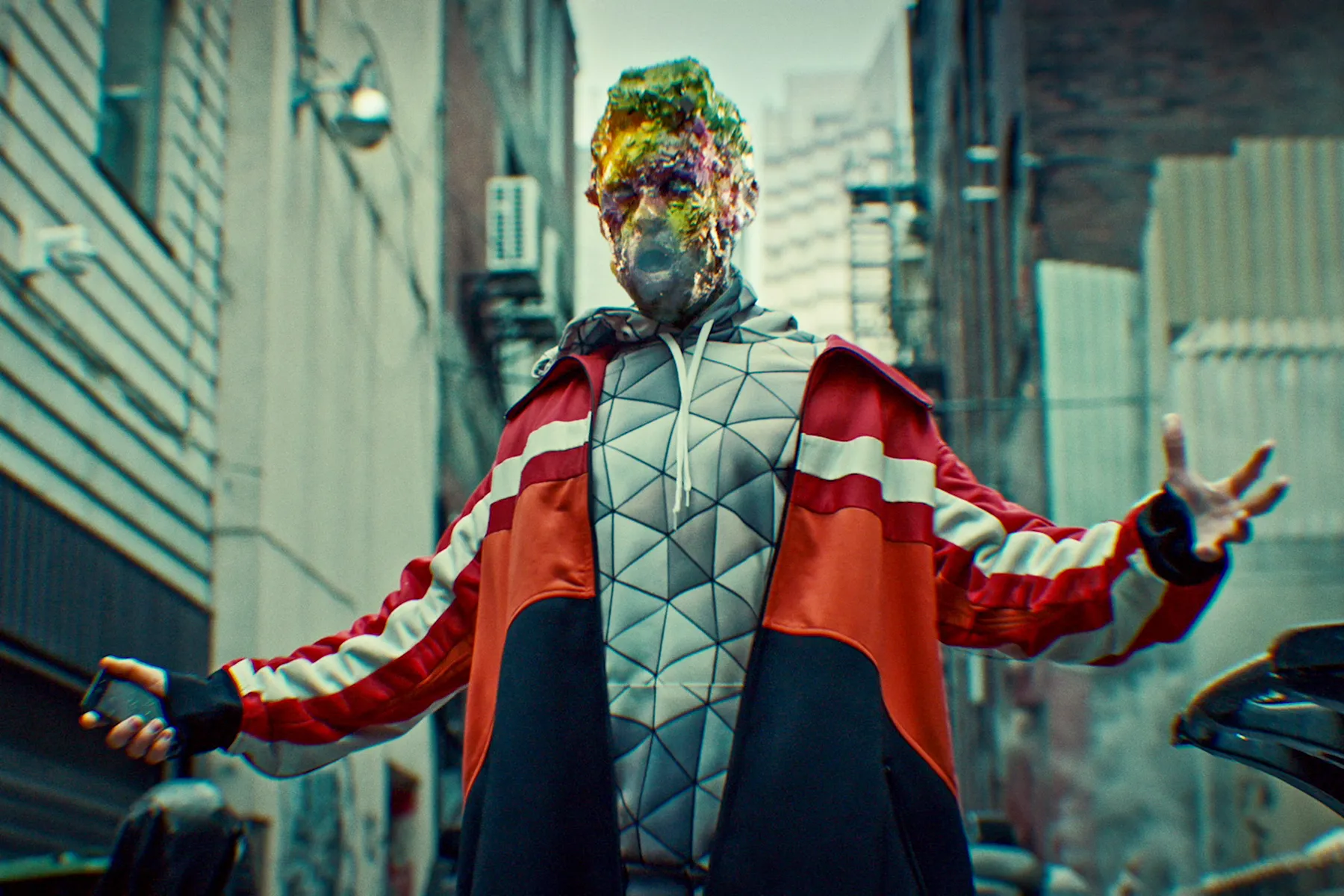
The story follows Shadow Moon, an ex-convict coping with the death of his wife days before his release, as he comes to work for Mr. Wednesday (an incarnation of Odin) who seeks to wage war against the new American Gods with help from the “Old Gods.” The novel and television show highlights how gods and myths, regardless of their origins, are fabricated by the people who believe in them. Just as the “Old Gods” are altered by the values of Western society and incarnated as new beings, such as Odin becoming Mr. Wednesday or Wisakedjak, a trickster from Algonquian mythology, going by Whiskey Jack.
At times the gods are confused for their counterparts in other religions or have several incarnations due to their presence among different cultures and believers. The “New Gods” also represent the malleability of mythology with new gods like Technical Boy and Media, who represent not only the corruption and control these aspects have over the daily lives of Americans, but also reflect how modern innovations are making their way into our spiritual beliefs.
Contemporary Paganism In Popular Culture (“PC Paganism”)
Though the overlap between mythology and fandom is predominately contextual and focuses on the portrayal of mythological figures or the creation of new myths, religion is still able to lend its authority to these stories. Fans take aspects of their favorite fandoms or characters and apply them to spiritual practices called Pop Culture Paganism (PC Paganism). Fanlore defines pop culture paganism as:
“an umbrella term for the transformative use of media in Pagan customs and rituals. Pop culture Paganism covers a wide variety of activities, such as revering book or film characters as deities, using pop culture figures in religious rituals and media, practicing religions or worshiping deity pantheons depicted in pop culture media, or simply depicting traditional deities as they appear in pop culture media.”
14Fanlore. Pop Culture Paganism. 2024.

Much like other forms of paganism, PC paganism can use and combine multiple different aspects of worship, spiritualism, or witchcraft into the practice. Thepaganstudygrouppage15The Pagan Study Group. Tumblr. 2014. on Tumblr outlines the different ways PC Pagans incorporate fandom into their beliefs. Tarot cards remain a popular form of PC paganism, in which artists combine the meanings of tarot cards with characters or scenes from television or film. For those who consider tarot cards to be a magical practice, the combination of characters with fortune-telling pulls fandom into the realm of the spiritual.
Characters are carefully selected to match the tarot card’s meaning, creating new a form of iconography in which pre-existing fictions are linked to a traditional form of witchcraft. Other fans/practitioners take the term paganism more literally and worship the characters themselves as deities or spirits from alternate universes. The beliefs around this worship vary; sometimes the character is a deity themself or maybe they are an incarnation or disguise for other powerful forces. A further form of worship, called Godspousery, is the romantic relationship or courtship with a deity (found in other religions) but applied to its character in popular culture.
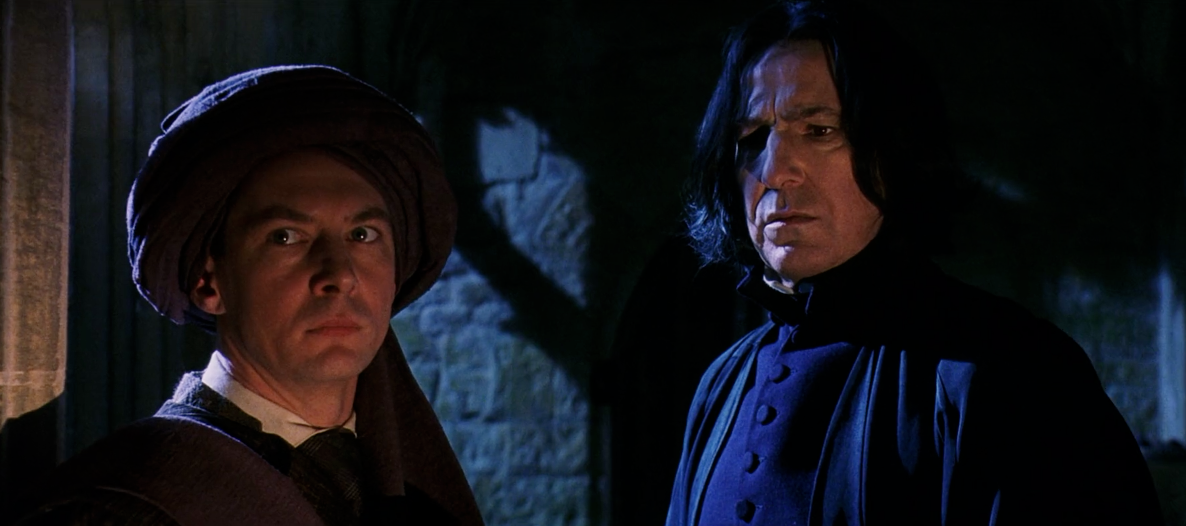
It is considered to being a religious figurehead, such as a nun or a priest, in which someone is both literally and figuratively married to a deity as a form of service. Snapeism follows the religious worship of Severus Snape from the Harry Potter series and uses Godspousery as a fundamental practice within the religion during its height in 2006. The religion valued the flawed nature of humans and looked inward to identify and rectify those flaws.
“To an extent, Snapeism actually mirrored elements of Christianity. There is a Christian belief that the Bible is somewhat flawed—its authors were inspired by God, but God did not literally write it, and so it is marred by human flaws, which is why there are passages that just talk about irrelevant things that modern Christians don’t believe. The Snapewives had the same philosophy about the Harry Potter books.”
16(Harry Potter Fandom) Married to Severus Snape on the Astral Plane: The Story of the Religion of Snapewives, 2019.
Other religions are born out of pop culture. Jediism is considered a parody of religion, as it was formed when a record number of people responded with Jedi as their religion on the census in the UK, Australia, and New Zealand. The foundations of Jediism found in Star Wars differ from the ones in real-world practice. True practitioners of Jediism and many fans follow some of the main morals and lessons set by the Jedi in the films, predominantly being “mindful of negative emotions that lead to the Dark Side.” 17Beyer, Catherine. “Basic Teachings of the Jedi.” Learn Religions, Aug. 26, 2020.

It can be tempting to pass off pop culture paganism and the spiritual practice of fandom as “false religion;” but it is important to remember that much like widely practiced religions, PC paganism takes mythology and stories and uses religion as a way of legitimizing beliefs. Our sense of morality and spirituality are influenced by several factors in our lives, ranging from religion to our personal experiences to our cultures. Fandom is just one of the many ways in which we learn about the world around us and can influence how we interpret personal or supernatural aspects of our lives.
Is Fandom Evolving Into A Modern Mythology?
So much of fandom’s lexicon and culture harkens back to religious practices and rituals. We use words such as “canon” to reference the religious canon of truthful works, like rules all fans acknowledge. We sit in front of our TVs or computers at a certain time each week to watch new episodes of our favorite show just as worshipers gather for weekly services. And we acknowledge important anniversaries in the same manner we celebrate religious holidays.
Fandom plays an important part in our lives. It provides entertainment, routine, friendship, and moral lessons we carry with us. Fandom creates and transforms our cultural myths in new ways and builds collections of stories for the modern age. Whether it’s Percy Jackson’s retelling of classic heroes and monsters or contemporary Jedi following the ways of the Force: these mythologies will certainly stick around for a long time.
References
- 1Willis, Roy G., ed. World Mythology. Macmillan, 1993.
- 2Darth Vader Lucas, George. Star Wars: Return of the Jedi. Lucas Films. 1983.
- 3Lee, Stan. Amazing Fantasy #15. Marvel Comics. 1962.
- 4Tolkien, J. R. R. 1892-1973. The Return of the King: Being the Third Part of The Lord of the Rings. New York, N.Y., Quality Paperback Book Club, 2001.
- 5Leeming, David. The Oxford companion to world mythology. Oxford University Press, 2005
- 6Alighieri, Dante. The Divine Comedy. Translated by H. F. Cary, Wordsworth Editions, 2009.
- 7Milton, John, 1608-1674. Paradise Lost. London ; New York :Penguin Books, 2000.
- 8Gaiman, Neil, and Terry Pratchett. Good Omens. Gollancz, 2014.
- 9Wiseman, Len, director. Lucifer. Netflix. 2016-2021. Warner Archive Collection 2015.
- 10Riordan, Rick. Percy Jackson and the Olympians, Book One the Lightning Thief. Hyperion, 2006.
- 11Engström, Anders. “We Visit the Garden Gnome Emporium”. Percy Jackson and The Olympians. Disney+. 2023.
- 12Lee, Stan. Journey into Mystery #83. Marvel Comics. 1962.
- 13Gaiman, Neil. American Gods. Dark Horse, 2004.
- 14Fanlore. Pop Culture Paganism. 2024.
- 15The Pagan Study Group. Tumblr. 2014.
- 16
- 17Beyer, Catherine. “Basic Teachings of the Jedi.” Learn Religions, Aug. 26, 2020.
